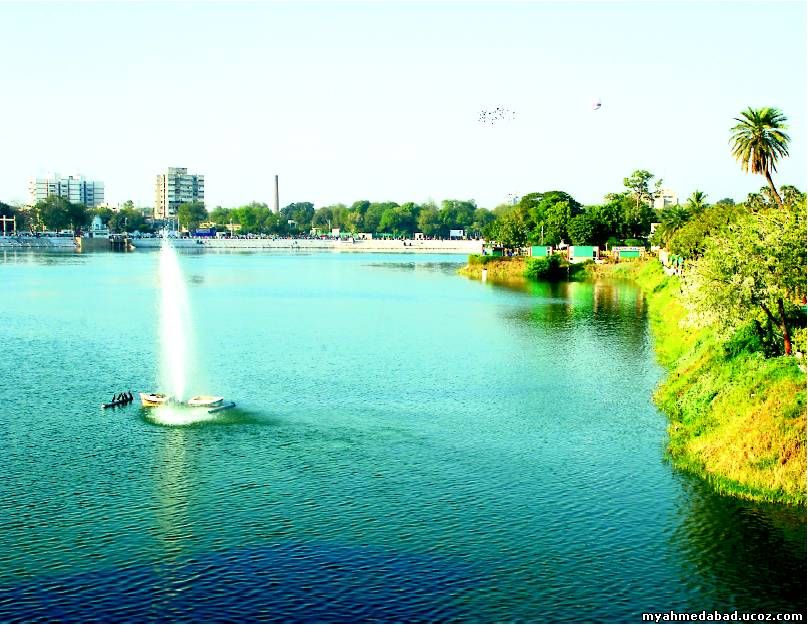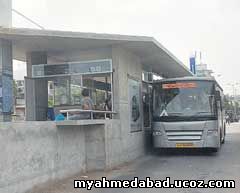Aapnu Amdavad
While Ahmedabad today is home to some of the best skyscrapers, multiplexes and flyovers, in the past it was more about mills and being the 'Manchester of the East'.Here's a look at the incredible 'makeover'
 The past two decades have been very dynamic as they have been a witness to a city that evolved very rapidly and cast off its garb from being just a traditional city of Gujarat to adorning the role of being amongst the leading new-emerging metro cities of the nation. The next year will see the culmination of a decade that began with the tragedy of the earthquake of 2001 where nearly 50 multistoreyed buildings were destroyed followed by another tragedy in 2002 which saw the city burning in communal riots. The commitment of the community, the government and the NRI Gujarati's, in a combined effort, succeeded in retaining the image of a glorious city and today Ahmedabad is one of the leading cities of the country. It all began when in 1818 the British East India Company took over Ahmedabad. This was followed by the establishment of a British Cantonment in 1824, a municipal government in 1858, a railway link to Mumbai in 1864. The presence of an industrial elite, who saw the British rule as a means to procure latest textile technology, ensured that even under colonial rule the city grew affluent and was in fact known as the 'Manchester of the East'. It was from only 1915 that the city took on an active role in the freedom struggle. This struggle gave birth to not just leaders like Sardar Vallabhbhai Patel and Mahatma Gandhi, but to a philosophy that economic independence and self sustenance is the answer to genuine prosperity. Ahmedabad is divided by the Sabarmati into two physically distinct eastern and western regions. The eastern bank of the river houses the old city with its packed bazaars, the pol system of close clustered buildings, and numerous places of worship and heritage buildings. It also houses the main railway station and the GPO.The western bank facilitated by the construction of Ellis Bridge in 1875 and later with the modern Nehru Bridge, houses educational institutions, modern buildings, well-planned residential areas,shopping malls, multiplexes and new business districts centered around roads such as Ashram Road, CG Road & Sarkhej-Gandhinagar highway.
The past two decades have been very dynamic as they have been a witness to a city that evolved very rapidly and cast off its garb from being just a traditional city of Gujarat to adorning the role of being amongst the leading new-emerging metro cities of the nation. The next year will see the culmination of a decade that began with the tragedy of the earthquake of 2001 where nearly 50 multistoreyed buildings were destroyed followed by another tragedy in 2002 which saw the city burning in communal riots. The commitment of the community, the government and the NRI Gujarati's, in a combined effort, succeeded in retaining the image of a glorious city and today Ahmedabad is one of the leading cities of the country. It all began when in 1818 the British East India Company took over Ahmedabad. This was followed by the establishment of a British Cantonment in 1824, a municipal government in 1858, a railway link to Mumbai in 1864. The presence of an industrial elite, who saw the British rule as a means to procure latest textile technology, ensured that even under colonial rule the city grew affluent and was in fact known as the 'Manchester of the East'. It was from only 1915 that the city took on an active role in the freedom struggle. This struggle gave birth to not just leaders like Sardar Vallabhbhai Patel and Mahatma Gandhi, but to a philosophy that economic independence and self sustenance is the answer to genuine prosperity. Ahmedabad is divided by the Sabarmati into two physically distinct eastern and western regions. The eastern bank of the river houses the old city with its packed bazaars, the pol system of close clustered buildings, and numerous places of worship and heritage buildings. It also houses the main railway station and the GPO.The western bank facilitated by the construction of Ellis Bridge in 1875 and later with the modern Nehru Bridge, houses educational institutions, modern buildings, well-planned residential areas,shopping malls, multiplexes and new business districts centered around roads such as Ashram Road, CG Road & Sarkhej-Gandhinagar highway. For full artical click here
BRTS puts Ahmedabad in the fast lane
 Amdavadis will board a new era of mobility on Wednesday. The eagerly awaited Bus Rapid Transit System (BRTS) -- arguably India's first project of its kind -- which will move commuting into a historic gear in the city, is to be launched on Wednesday.
Amdavadis will board a new era of mobility on Wednesday. The eagerly awaited Bus Rapid Transit System (BRTS) -- arguably India's first project of its kind -- which will move commuting into a historic gear in the city, is to be launched on Wednesday.
The service, to be run by the AMC-floated Ahmedabad Janmarg Limited (AJL), promises to offer world-class urban transport. Initially, its 22 swanky BRTS buses will be seen gliding smoothly on the 12-km stretch from RTO to Chandranagar. The project has cost Rs80 crore so far. Chief Minister Narendra Modi will flag off the service from Chandranagar.
Ahmedabad BRTS is being called the country's first such project because experts who planned it say that the only project that comes close to it in India, the Delhi BRT, has a different character. The experts say that the Delhi BRT is primarily a road infrastructure project or high-capacity bus service in which all types of buses run in a lane designed for the BRTS.
For full artical click here